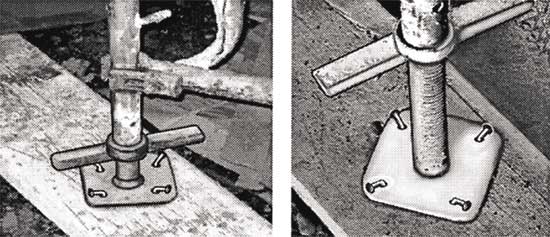|
Masonry Information Bulletin - Good Scaffold Practices
1 - From the Ground Up (Taken from Construction Safety Association of Ontario Magazine, Winter 2000-2001) |

|
Construction Safety
Association of Ontario
 Masonry and Allied Trades Labor-Management Health & Safety Committee
Masonry and Allied Trades Labor-Management Health & Safety Committee

This issue is one in a series of good scaffold practices. It is a joint initiative between labor and management designed to increase awareness of safe working practices in the masonry industry.
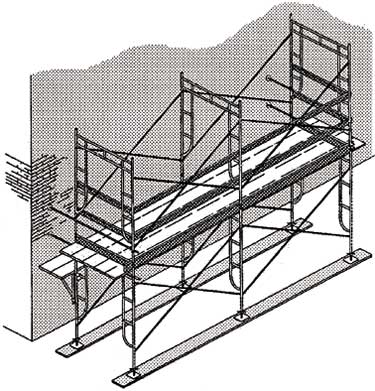 |
Statistics indicate that the most common injuries are slips and falls. Over 50% of these injuries occur because of improper scaffold practices. The information presented here deals with site preparation, mudsills, baseplates and leveling screws. |
Site
Inspection
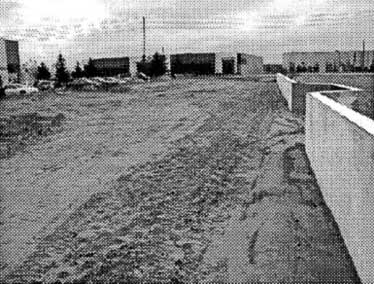 |
Check location for
|
Site
Preparation
|
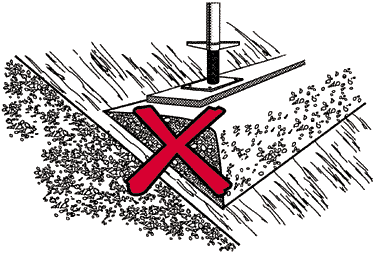 |
 |
Sections 128 (1)c of the Construction regulations require that every scaffold have footings, sills or supports that are sound, rigid and capable of supporting twice the maximum load to which the scaffold may be subjected without settlement or deformation.
Mudsills
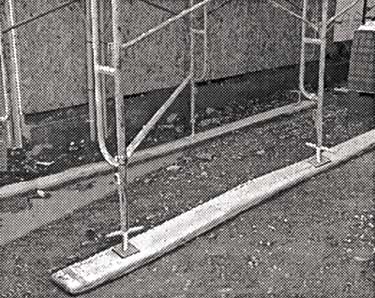 |
|
Baseplates
|
Distribute weight on mudsill and prolong plank life. Attach scaffold to mudsill and prevent movement due to impact, vibration or uplift due to improper loading. |
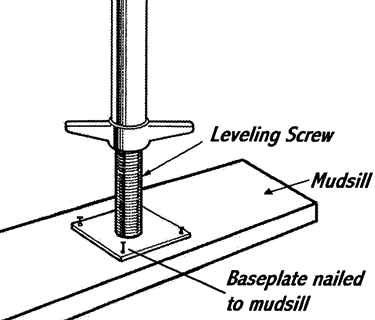 |
Leveling
Screws
Eliminate need
for blocking under mudsill.
Allow for easy leveling and plumbing of scaffold.
Unsafe
Practices
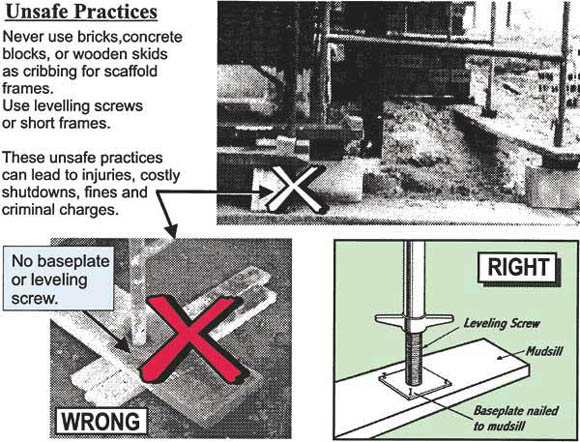
Refresher Quiz - Answer True or False
1. Baseplates should be centered on and nailed to mudsills (T/F)
2. Mudsills should never extend beyond end of scaffold. (T/F)
3. For minor adjustments to plumb, use leveling screws. (T/F)
Answers are at the bottom of the page.
For more information and training call:
© Construction Safety Association of Ontario
21 Voyageur Court South, Etobicoke, Ontario M9W 5M7
| Answers: | 1) true 2) false 3) true |
![]()
This paper appears in the eLCOSH website with the permission of the author
and/or copyright holder and may not be reproduced without their consent.
eLCOSH is an information clearinghouse. eLCOSH and its sponsors are not
responsible for the accuracy of information provided on this web site,
nor for its use or misuse.
![]() eLCOSH
| CDC | NIOSH
| Site Map | Search
| Links | Help
| Contact Us | Privacy Policy
eLCOSH
| CDC | NIOSH
| Site Map | Search
| Links | Help
| Contact Us | Privacy Policy

